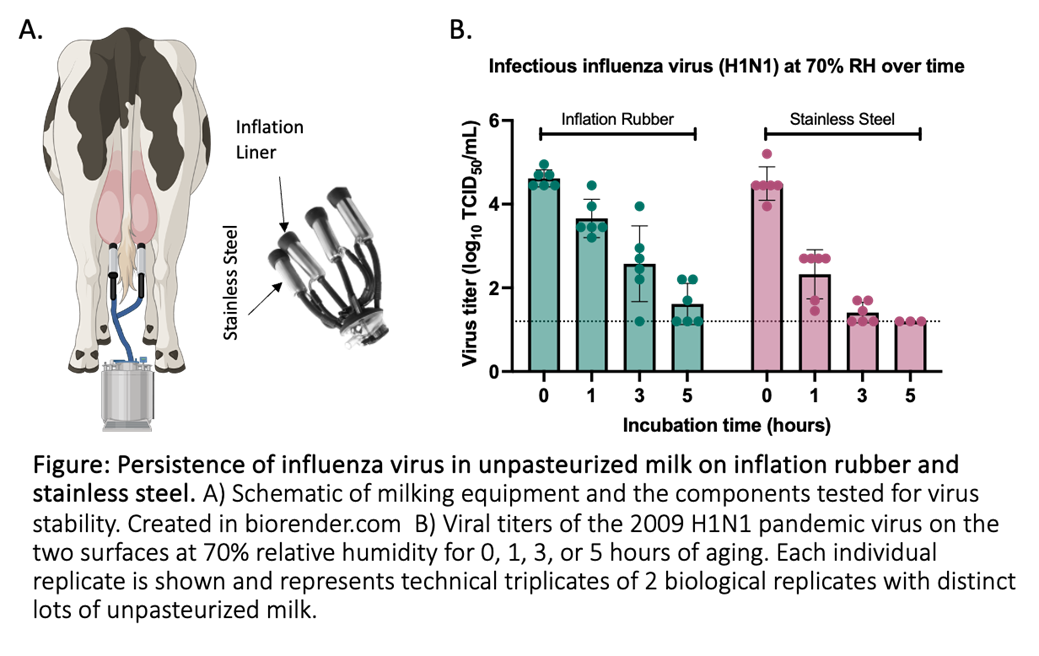University of Pennsylvania CEIRR (Penn-CEIRR) researchers AJ Campbell, Ph.D., Valerie Le Sage, Ph.D., and Seema Lakdawala, Ph.D. responded to the H5 influenza outbreak in cattle. Learn more about their work here.
Goal: Define the stability of influenza virus in unpasteurized milk on surfaces commonly used in the milking parlor that could act as fomites to support the spread of influenza virus between cows and/or workers.
Approach: Influenza virus, A/California/07/2009 (H1N1), was diluted 1:10 in raw unpasteurized milk obtained from a local health store and PCR tested to ensure no influenza viral RNA was present. Similar to prior studies (Kormuth et al JID; PMID: 29878137), 1uL drops of diluted virus were pipetted onto either stainless steel coupons or inflation liner rubber coupons within a environmental chamber and collected immediately (time 0), or after 1, 3 or 5 hours of aging at 70% relative humidity (to mimic milking parlor conditions). Virus titer was calculated by determining the tissue culture infectious dose 50 on MDCK cells. Temperature and relative humidity within the chamber were confirmed using an aranet device during the duration of the study. Each experiment was done in technical triplicates and with at least two independent biological replicates using two distinct lots of milk.
Results: In the figure we highlight the milking equipment, commonly referred to as the ‘claw’, and noted that the inflation rubber liner (or milking rubber) and stainless steel would be possible surfaces where virus could deposit during the milking process. Using the H1N1 2009 pandemic virus as a surrogate we observed that the virus was highly stable, defined as <2 logs of decay, for at least 3 hours on inflation rubber and for at least 1 hour on stainless steel.
Conclusion: These results indicate that deposited virus on milking equipment could remain infectious for long periods of time, posing a potential risk to humans as well as contributing to cow-to-cow transmission. Typically there is only 10-15 min between milking sessions with shared milking equipment, thus virus from an asymptomatic infected cow could remain on the material for multiple rounds milking sessions. These results are currently being validated with bovine H5N1 virus and preliminary data suggests a similar trend in stability, with <2 log decay at 1 hour of incubation at 70% RH on both surfaces.
Reference: Le Sage V. et al. (2024) Influenza H5N1 and H1N1 viruses remain infectious in unpasteurized milk on milking machinery surfaces. medRxiv. 2024.05.22.24307745. This article is a preprint and has not been certified by peer review. It reports new medical research that has yet to be evaluated and so should not be used to guide clinical practice.
 Figure: Persistence of influenza virus in unpasteurized milk on inflation rubber and stainless steel.
Figure: Persistence of influenza virus in unpasteurized milk on inflation rubber and stainless steel.